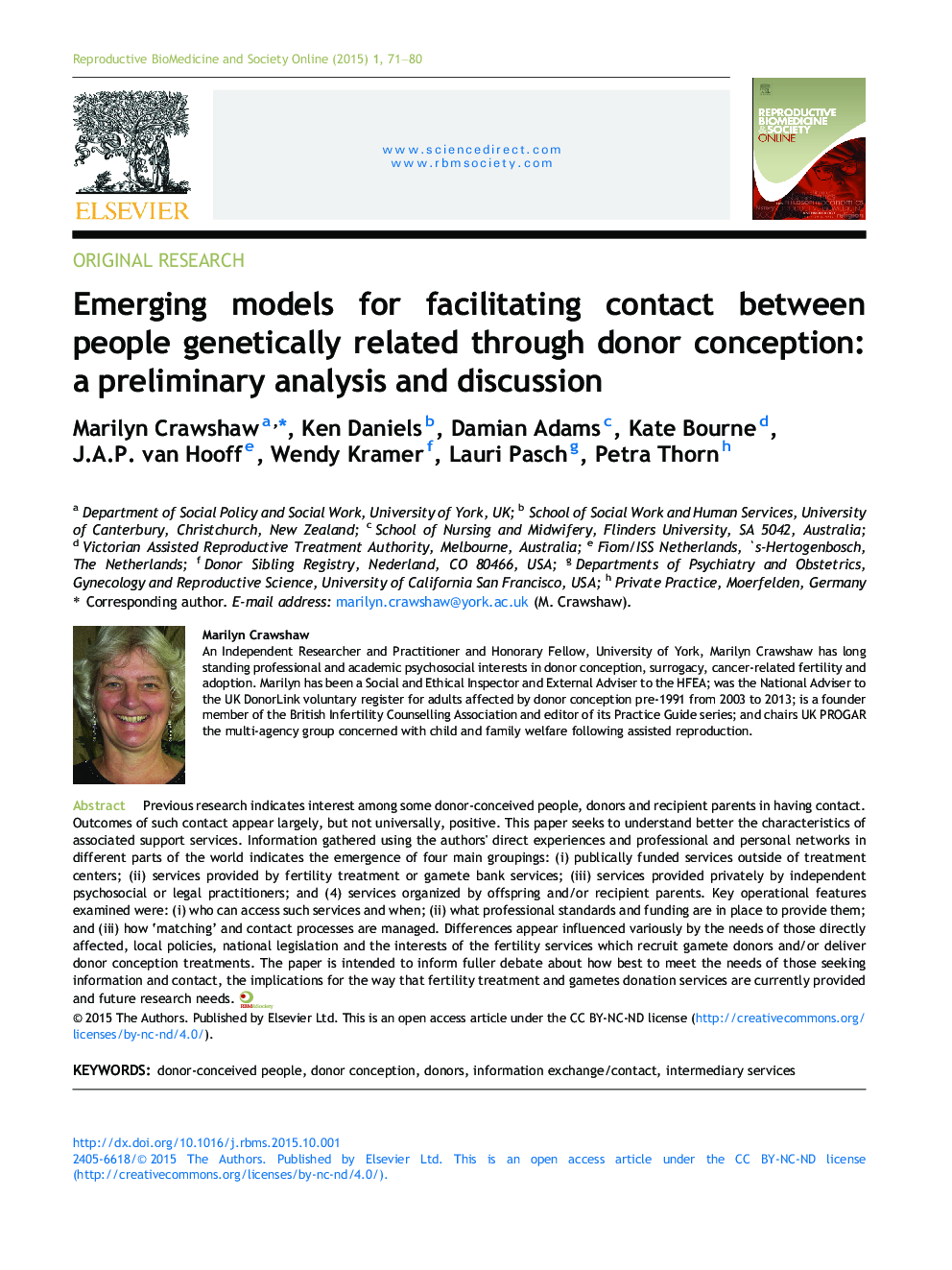| Article ID | Journal | Published Year | Pages | File Type |
|---|---|---|---|---|
| 1090082 | Reproductive Biomedicine & Society Online | 2015 | 10 Pages |
Previous research indicates interest among some donor-conceived people, donors and recipient parents in having contact. Outcomes of such contact appear largely, but not universally, positive. This paper seeks to understand better the characteristics of associated support services. Information gathered using the authors' direct experiences and professional and personal networks in different parts of the world indicates the emergence of four main groupings: (i) publically funded services outside of treatment centers; (ii) services provided by fertility treatment or gamete bank services; (iii) services provided privately by independent psychosocial or legal practitioners; and (4) services organized by offspring and/or recipient parents. Key operational features examined were: (i) who can access such services and when; (ii) what professional standards and funding are in place to provide them; and (iii) how ‘matching’ and contact processes are managed. Differences appear influenced variously by the needs of those directly affected, local policies, national legislation and the interests of the fertility services which recruit gamete donors and/or deliver donor conception treatments. The paper is intended to inform fuller debate about how best to meet the needs of those seeking information and contact, the implications for the way that fertility treatment and gametes donation services are currently provided and future research needs.
